We have moved locations for our Missouri office, our new location is at 211 N. Lindbergh Blvd., Suite 201 Creve Coeur, MO 63141, excited to see you there!
Obstructive Sleep Apnea (OSA)
Obstructive Sleep Apnea is a sleep disorder characterized by repeated breathing interruptions during sleep. These disruptions can lead to a range of health issues, including chronic fatigue, high blood pressure, heart disease, stroke, diabetes, and cognitive impairment.
Obstructive Sleep Apnea (OSA)
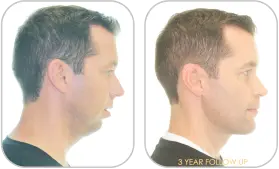
Before
After
LeFort 1 Segmental Osteotomy. Bilateral Total Joint Replacement (TJR). Geniplasty.
VIDEO INCLUDED
Prior to surgery, Josh had a bone-on-bone joint condition on the right side of his jaw. He was in severe pain and had limited ability to open his mouth which impacted his daily life, mood, and relationships. Sleep apnea further worsened his quality of life. The surgery involved correcting the arthritic joint and moving the jaw forward.
Obstructive Sleep Apnea (OSA)
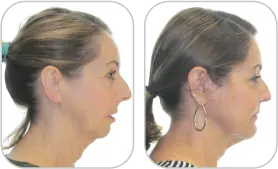
Before
After
LeFort 1 Segmental Osteotomy. Bilateral Total Joint Replacement (TJR).
Sleep Apnea was negatively affecting her health, causing fatigue, brain fog, and irritability. Sleep Apnea can also amplify the risk of heart disease, stroke, and high blood pressure.
Obstructive Sleep Apnea (OSA)
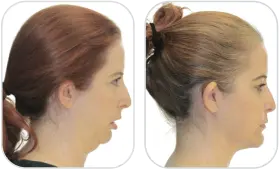
Before
After
LeFort 1 Segmental Osteotomy. Bilateral Total Joint Replacement (TJR). Genioplasty.
Chronic fatigue resulted from impaired sleep quality associated with obstructive sleep apnea, impacting her daily life.
Obstructive Sleep Apnea (OSA)
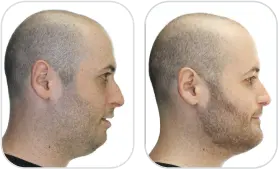
Before
After
First Treatment: Maxillomandibular Advancement.
Second Treatment: Distraction Osteogenesis
on the Lower Jaw.
VIDEO INCLUDED
The patient was struggling with an undiagnosed health problem for four years and experienced constant exhaustion that affected his work during his PhD program. Sleep tests finally revealed that he had severe Sleep Apnea. He met Dr. Movahed, who identified a below-average size airway even when awake, which worsened during sleep.
Obstructive Sleep Apnea (OSA)
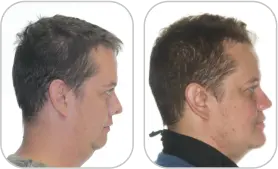
Before
After
First Treatment: Robotic Base of Tongue Resection
Second Treatment: Maxillomandibular Advancement Surgery (MMA). Distraction Osteogenesis on the Lower Jaw. Bilateral Total Joint Replacement (TJR).
He had severe obstructive sleep apnea (OSA) and sought treatment with Dr. Movahed. Initially, he underwent bimaxillary orthognathic surgery, which repositioned the upper and lower jaws to address airway obstruction. Despite some improvement, additional intervention was required. Subsequently, he underwent distraction osteogenesis to further improve the position and function of his lower jaw.
